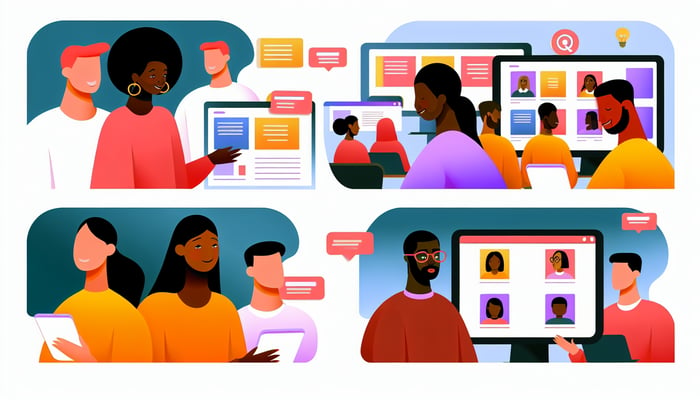
Using Image-Based Quizzes for a More Visual Experience
Discover how image-based quizzes can enhance engagement and retention in learning. This blog post offers insights into their benefits and practical tips on creating effective image quizzes.

Discover how image-based quizzes can enhance engagement and retention in learning. This blog post offers insights into their benefits and practical tips on creating effective image quizzes.
In today’s fast-paced digital world, capturing attention is more challenging than ever. Traditional text-based quizzes often fail to engage learners effectively. Enter image-based quizzes—a dynamic tool that fosters a more interactive and memorable learning experience. This blog post explores the benefits of using image-based quizzes and offers practical insights on how to implement them in your educational or training programs.
Image-based quizzes integrate visuals into the assessment process, allowing learners to respond to questions using images instead of or alongside text. This format not only makes quizzes more engaging but also caters to various learning styles, particularly visual learners.
Creating an engaging image-based quiz involves thoughtful planning. Here are some steps to get started:
Before designing your quiz, clarify the learning outcomes you wish to achieve. What knowledge or skills should participants demonstrate? This focus will guide your choice of images and questions.
Select images that are relevant and enhance the quiz content. Consider the following:
Questions should encourage critical thinking and not just straightforward recall. Examples include:
Utilize online quiz platforms that support image uploads and interactive features. Tools like Quizlet, Kahoot!, or Google Forms can make the process easier and more engaging.
After creating your quiz, pilot it with a small group. Gather feedback on the clarity of questions, relevance of images, and overall user experience. Use this feedback to refine your quiz before wider distribution.
Image-based quizzes are an innovative way to enhance the learning experience, making assessments more engaging and effective. By incorporating visuals, you can cater to different learning styles and promote a deeper understanding of the material. With careful planning and execution, these quizzes can transform the way learners interact with content.

Discover the surprising benefits of playing online quizzes! From enhancing memory retention to reducing stress, learn how these engaging activities can improve your cognitive skills and promote social

Discover the numerous benefits of online learning, from flexibility to diverse resources. Learn how educational quizzes enhance retention and engagement, making learning more effective and enjoyable.

Quiz battles are rapidly gaining popularity as competitive quizzing becomes a thrilling sport. This blog explores the reasons behind this trend, the benefits of participation, and how you can get in.